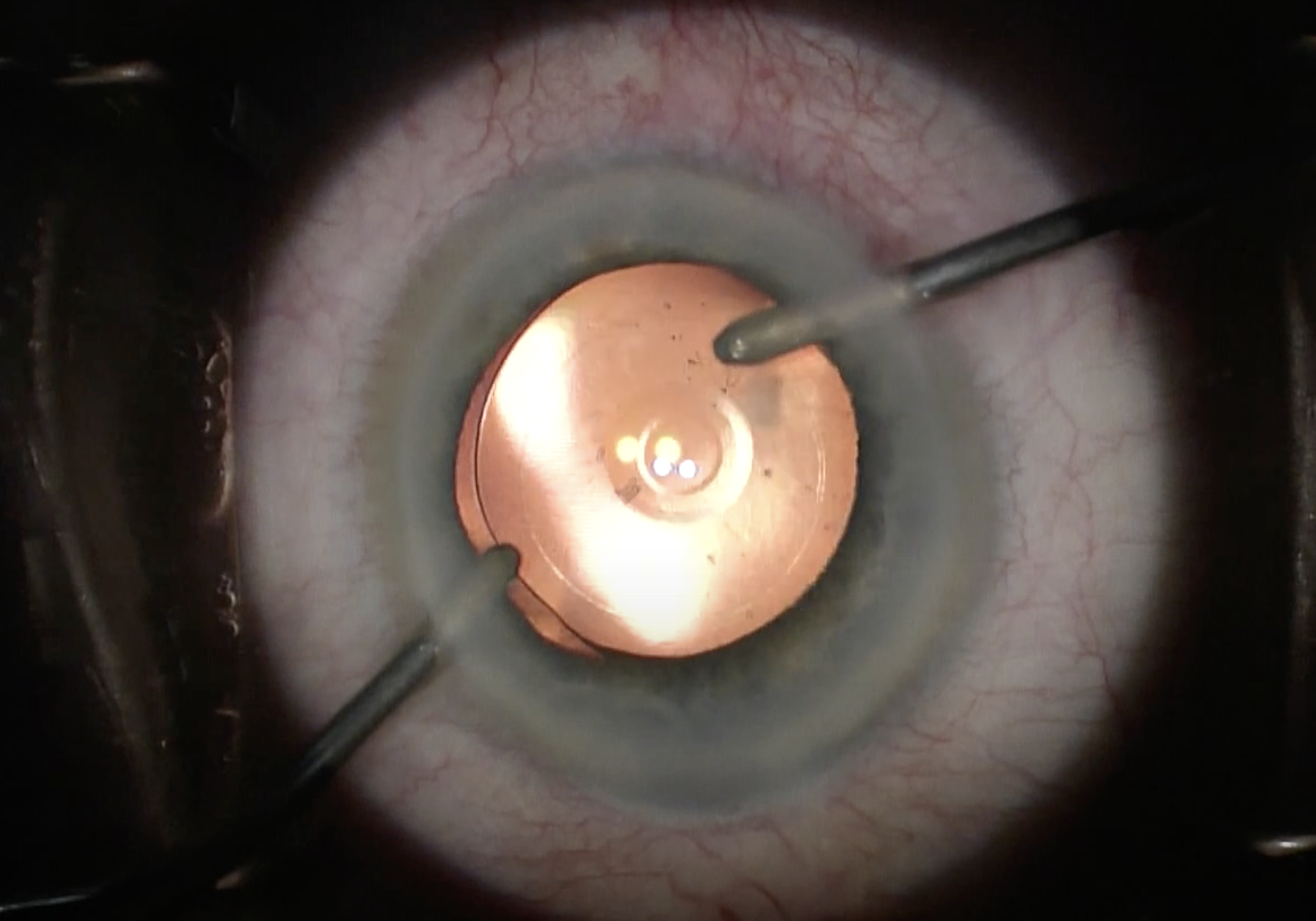 |
|
IOL clarity may fluctuate due to hypotensive drug use. Photo: Alcon. Click image to enlarge. |
Findings from a recent laboratory study showed that hypotensive drugs have a significant effect on hydrophobic and hydrophilic intraocular lens (IOL) clarity, leading to changes in light absorbance, discoloration and precipitate formation.
In a recent analysis, four types of IOLs (two hydrophilic-acrylic and two hydrophobic-acrylic) were soaked in solutions containing timolol-maleate 0.5%, dorzolamide 2%, brimonidine-tartrate 0.2%, latanoprost 0.005%, brimonidine-tartrate/timolol-maleate 0.2%/0.5% and dorzolamide/timolol-maleate 2%/0.5%. The researchers used non-treated IOLs and lenses soaked in a balanced salt solution as controls.
The study authors examined each IOL with four different techniques, including light microscopy imaging, light absorbance measurements at 550nm through the optic’s center, assessment by a scanning electron microscope and energy dispersive X-ray spectrometry.
Data showed that all IOLs soaked in balanced salt solution were clear with no significant discoloration or precipitate formation. The study authors reported that the light absorbance in these lenses was comparable to non-soaked, non-heated IOLs.
They observed a significant difference in light absorbance between all four treated IOL types and noted that the drops with the most impact on light absorbance also differed between IOLs. The findings revealed a brown and yellow discoloration among all IOLs soaked in dorzolamide and brimonidine-tartrate solutions, respectively.
Examination with a scanning electron microscope demonstrated precipitates that differed in size, morphology and distribution between the different IOL solution combinations, according to the study authors. Additionally, energy dispersive X-ray spectrometry uncovered the presence of calcium and phosphor in most precipitates as well as sulfur in brown discolored IOLs.
This in vitro study shows a correlation between loss of clarity in IOLs and exposure to hypotensive drugs, according to the study authors, who noted that further research is needed to better understand this connection and its clinical importance.
“Correlating our findings to clinical practice is impossible at present,” the researchers noted in their Eye paper. “Different methods of in vitro and in vivo studies are required before this can be properly addressed. It is possible that in the future, knowledge of hypotensive drug-IOL interactions can facilitate better, evidence-based pairings.”
Sharon T, Haim LNB, Rabinowicz N, et al. The effect of hypotensive drugs on intraocular lenses clarity. Eye (Lond). September 7, 2022. [Epub ahead of print]. |

